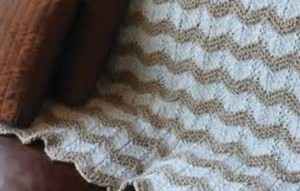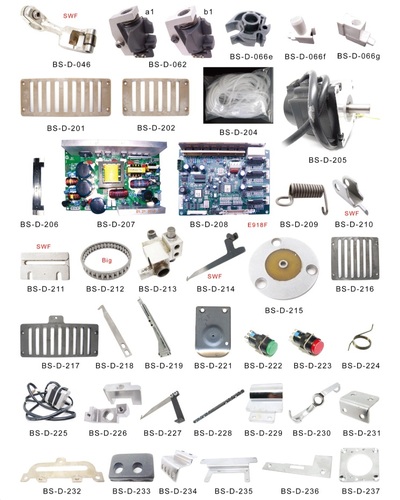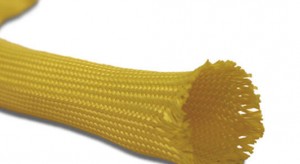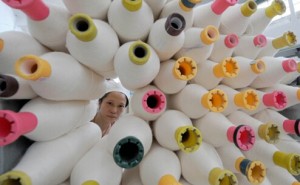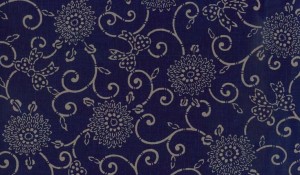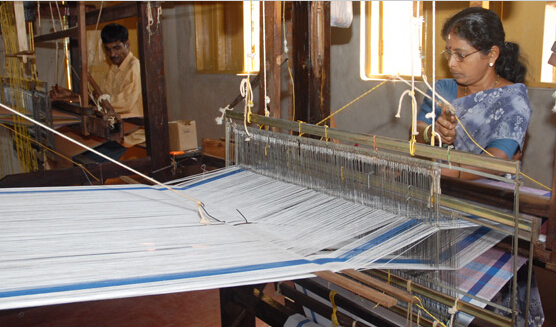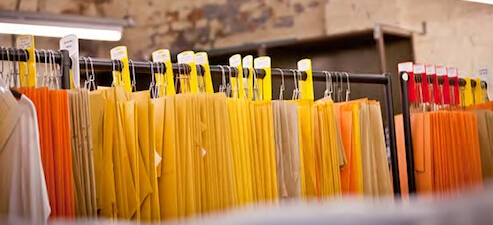Knit fabric is produced from loop formation. So it needs to be careful during production. Different types of faults could be found in knit fabric, which could be the cause of fabric rejection. If we can find out the defects of fabric during production, than we can take steps to remove it from the next knitting production process.In practical; following knitting faults could be found in the knit fabric. Some knitting faults and their remedies are given bellow:
Hole MarkCauses:
During loop formation the yarn breaks in the rejoin of the needle hook.Holes are the results of yarn breakage or yarn cracks.If the yarn count is not correct on regarding structure, gauge, course and density.Badly knots or splicing.Badly set of yarn feeder.
Needle MarkCauses:
When a needle breaks down then needle marks come along the fabrics.If a needle or needle hook is slightly bends then needle mark comes on the fabrics.Star Causes:Buckling of the needle latch.Yarn tension variation during production.Low G.S.M fabric production.
Sinker MarkCauses:
When sinker corrodes due to abrasion then sometimes it cannot hold a new loop as a result sinker mark comes.If sinker head bend then sinker mark comes.Drop StitchesCauses:If yarn is not properly feed during loop formation.Use of defective needle.Too loose of take down mechanism.If yarn tension is insufficient.If yarn feeder is badly set.Oil StainCause:When oil lick through the needle trick then it pass on the fabrics and make a line.Rush StainCause:If any rush in the machine.Pin HoleCause:Pin hole may come to fabric due to break down or bend of the latch.
Grease StainCauses:
Improper greasing in the machineIF greasing is excess.Cloth Fall OutCause:Cloth fall out can occur after a drop stitch especially when an empty needle with an empty needle with close latch runs into the yarn feeder and remove the yarn out of the hook of the following needles.
BarreCauses:
Yarn fault is responsible for this fault.If different micro near value of fiber content in yarn.Different luster and dye affinity of fiber content in yarn.During spinning different similar classes of fiber is mixed specially in carded yarn and these fibers have similar characteristics.In draw frame different similar classes sliver is mixed and make one sliver.
Yarn ContaminationCauses:
If yarn contains foreign fiber then it remains in the fabric even after finishing.Lot mixing and count mixing is responsible for these faults.Fly DustCause:In knitting section too much lint or short fiber is flying to and fro that are created from yarn due to low twist as well as yarn friction. This lint may adhere or attached to the fabric surface tightly during knit fabric manufacturing.
Yarn FaultsCauses:
Different yarn faults also are cause for knitting faults.NepsSlubsYarn count variationThick/Thin place in yarnHairinessNow, if we want to remove these knitting faults we should be aware before yarn selection and during knitting of fabric. Knitting machine conditions should be perfect. Needle, Sinker, Feeder and other equipments, which is used, should be fault free.So, Management related person should be aware about the causes of knitting faults and try to reduce the knitting faults.
